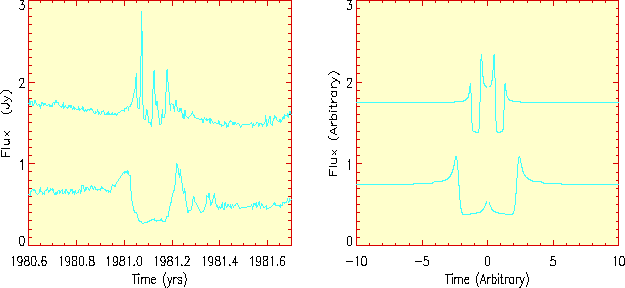
For over 60 years evidence has been accumulating that at least 90% of the matter in the Universe doesn't emit radiation which we can easily detect. Mark Walker and Mark Wardle have developed a theory which solves the dark matter problem at galactic scales.
Measurements on scales ranging from dwarf galaxies upwards show that the visible material - that which has been detected at wavelengths in the range from radio to gamma-rays - is not abundant enough to account for the dynamics of the systems under study. For example, the rotation speed of gas and stars in spiral galaxies rises from zero at the center, to a plateau at large radii. If the visible matter were the only matter responsible for the gravitational force binding the stars and gas to the galaxy, then the rotation speed should fall off at large distances from the center. However, we observe the rotation speed to stay the same as the radius increases, which implies that there is more matter than we can see - dark matter. Mark Walker and Mark Wardle have developed a theory which predicts that this dark matter is in the form of clouds of cool, molecular gas of primordial origin.
The two Marks were trying to explain the phenomenon of Extreme Scattering Events (ESEs: see previous section), and they found that a model based on cool clouds works very well indeed. At the surface of each cloud is a `skin' of ionized material which scatters the radio waves, thus giving rise to ESEs. The clouds have very little emission of their own, however, and are almost entirely transparent, so they are very difficult to see. Each cloud is expected to have about as much mass as the planet Jupiter, but with a size of roughly the Earth-Sun distance. Knowing the rate at which ESEs have been discovered, it follows that the clouds could make up most of our Galaxy!
While their theory is markedly different from conventional ideas on dark matter, Mark and Mark have shown that their model is broadly consistent with a wide variety of astronomical data, and they are now concentrating their efforts on specific tests of the theory.

The left-hand panel shows the intensity of radio emission from a quasar between June 1980 and June 1981 for two different radio frequencies. The small fluctuations are due to `ordinary' scintillation. The large peaks in the upper curve, and the dropout in the lower curve, are due to an ESE. The right-hand panel shows that the two Marks' model predicts the essential features of the ESE.